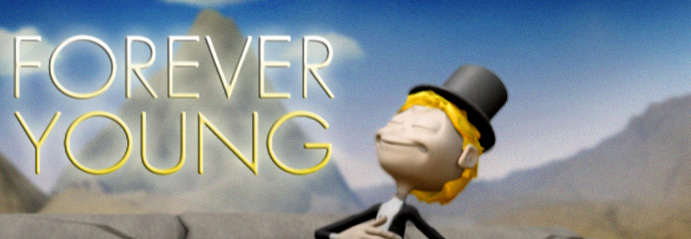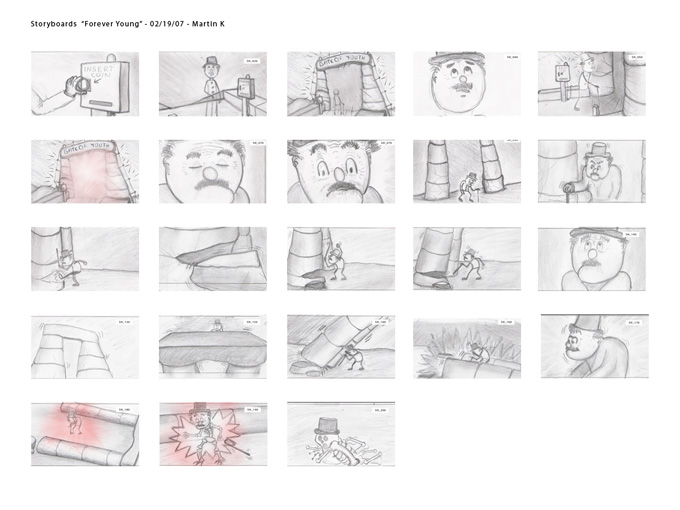
|
|
|
|
|
|
 |
|
|
|
 |
|
|
|
|
|
|
|
Animation Mentor: How did you come up with the concept for your short film?
Martin Kirkhaug:
The old man approaching the Gate of Youth idea was a result of some brainstorming and story spine exercises early on in Class 5. The idea of re-living your life with a lifetime of knowledge fascinates me and I also like that it’s a supernatural, but yet a well known concept, so not too much explanation was needed. I did a lot of research about fountain of youth etc, but couldn’t find anything about The Gate of Youth, so it was also kind of original. My initial idea with this story was to make a short about how any attempts on messing with nature, will fail. The moral of the story in the beginning was something like “Nature will always find a way to preserve its natural path.” The story went through a lot of stages on paper. With the help of a couple of very good Animation Mentor classmates, we brainstormed a lot of different ways of telling the story. At one point the old man turned into a seed and was picked up by a dove that flew into heaven. In another version, the man was electrocuted by a fuse box attached to the gate. It was really fun exploring and coming up with all kind of crazy stuff. In the version I submitted in the text pitch (and also the video pitch), the man turned into a skeleton and collapsed into a pile of bones.
Animation Mentor: What important lessons did you learn from making your short film?
Martin Kirkhaug:
I think the most important thing I learned was how to develop a simple idea into a workable complete story. I also learned how important the pitch and the response to the pitch are. Just by telling the story to somebody and getting their instant feedback, gave me indications early on if I was on the right track, and what parts worked and what parts needed more work. Animation Mentor: How long did it take to complete your film?
Martin Kirkhaug:
Animation Mentor: How much planning was put into your short film? Did planning help make the process easier?
Martin Kirkhaug:
In terms of time management, I made a very thorough production plan with daily deadlines that I made a big deal out of following during the production. Animation Mentor: Do you mind sharing some of the pre-production work with us with a little explanation of what we’re looking at.
Martin Kirkhaug:
Storyboards: 
Animatic: Lee Holdridge’s music is also added. The music at this time was supposed to be temporary only. But as the film progressed into the layout, I liked the music more and more and I decided to write an email to Mr. Holdridge asking for permission to use his music. He was very kind and there was no problem using his music as long as it was for non-commercial and educational purposes only. Layout: Blocking, Refining, Polishing:
Animation Mentor: What obstacles, if any, did you experience during the creation of your short film? How did you work your way around them?
Martin Kirkhaug:
Another thing is that I got very attached to my story. At times it was very hard to make changes that my mentor gave me, because I liked it the way it was. But in the end, I’m glad I trusted him and let my ego go, because now I think the changes made the story a lot better in the end. Animation Mentor: Tell how your Animation Mentor experience helped you in creating your short film.
Martin Kirkhaug:
|
|